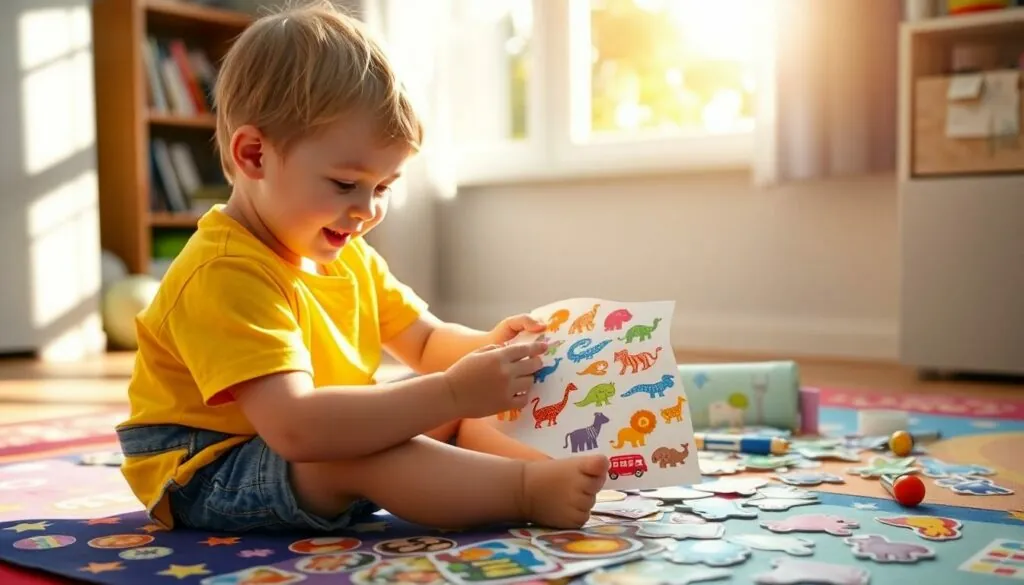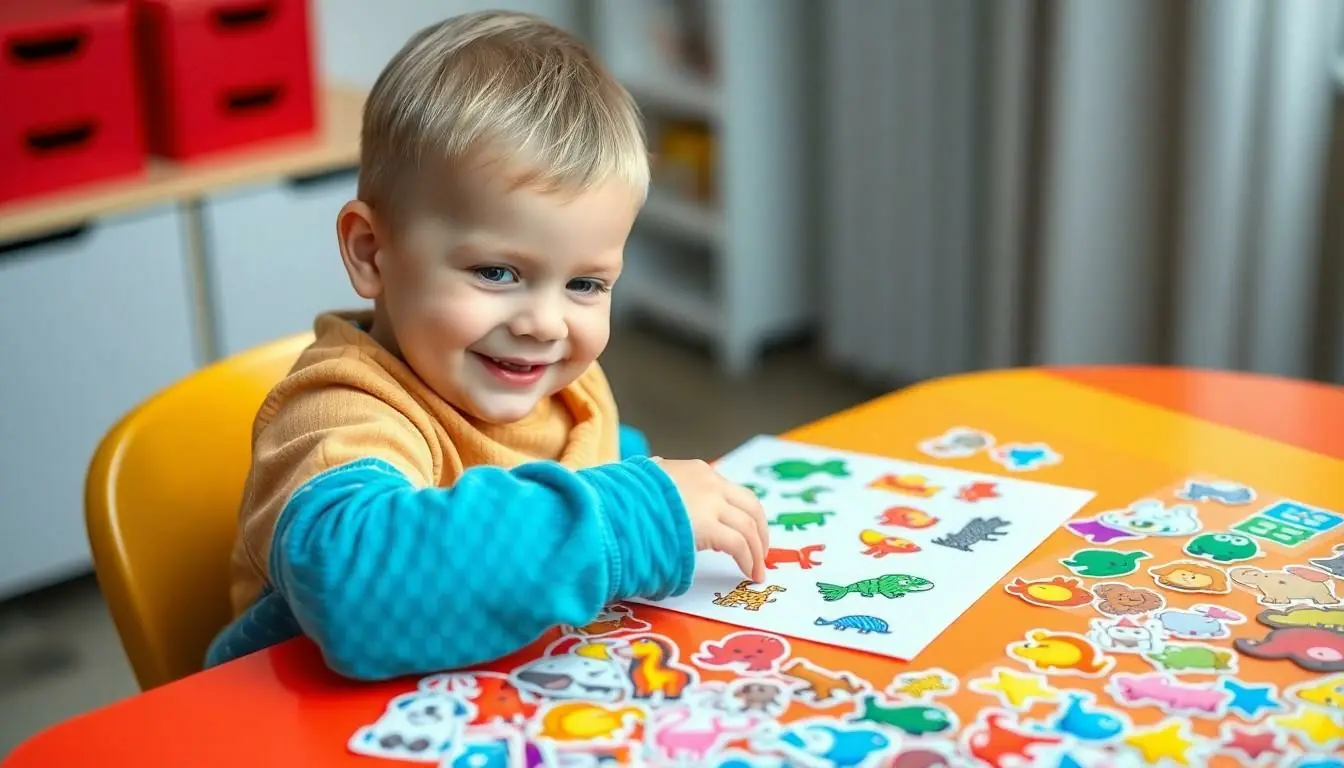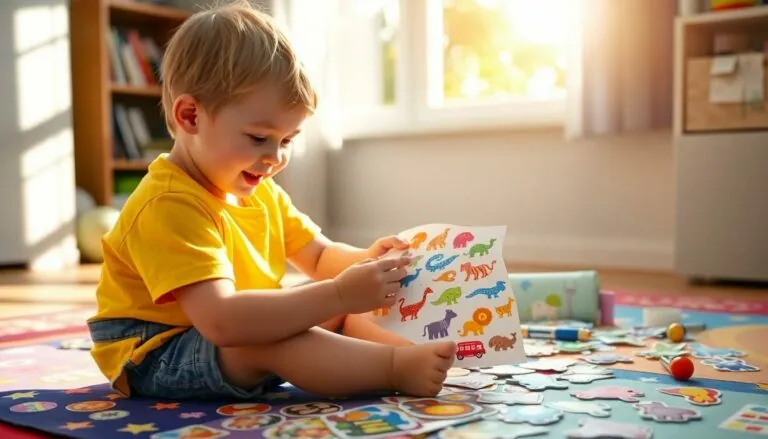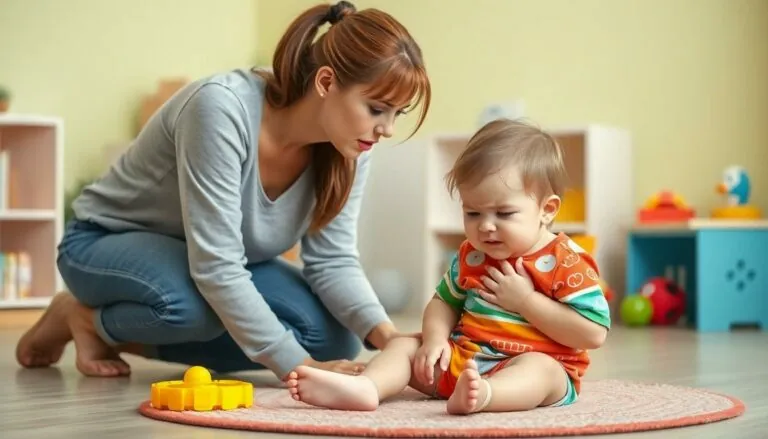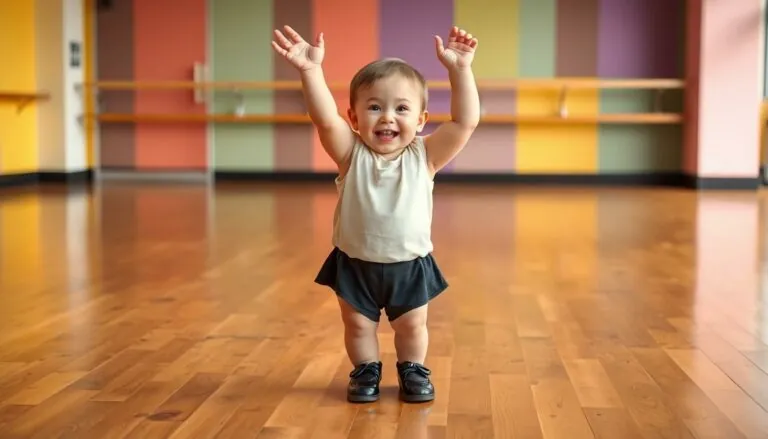Table of Contents
ToggleEvery parent knows the struggle: keeping toddlers entertained while trying to maintain some semblance of order. Enter stickers—tiny, colorful wonders that can transform a mundane afternoon into a creative explosion. They’re not just fun; they’re tools for learning and development. Who knew that a simple adhesive square could spark imagination and fine motor skills?
Overview of Stickers for toddlers
Stickers serve as a vibrant tool for engaging toddlers. These small, colorful items captivate children’s attention while encouraging exploration. Toddlers can peel, stick, and rearrange stickers, enhancing their fine motor skills. Various sticker designs exist, ranging from animals to vehicles, ensuring options for every child’s interest.
Using stickers fosters creativity and imagination. Children can create scenes or stories with their chosen stickers. This creative expression also stimulates cognitive development, as children learn to recognize colors, shapes, and themes. Found in various sizes, stickers accommodate the fine motor abilities of different toddlers.
Parents often appreciate the convenience of stickers for quiet play. Portability allows easy transport, making them suitable for travel or waiting rooms. Clean-up remains simple, as most stickers remove without residue, and they generally pose minimal risk, provided they aren’t used dangerously.
The educational aspect of stickers should not be overlooked. Sticker activities can teach counting or sequencing when parents guide children in arranging them. For example, having toddlers sort stickers by color or size adds an educational dimension to playtime.
Overall, stickers for toddlers offer versatility and fun. They contribute not only to play but to essential skill development, making them a popular choice among parents. Engaging toddlers through this playful medium proves both entertaining and beneficial for their growth.
Benefits of Stickers for toddlers
Stickers provide numerous advantages for toddlers. They can enhance developmental skills, fostering essential growth in young children.
Developmental Skills
Toddlers improve fine motor skills through peeling, sticking, and repositioning stickers. These simple actions strengthen hand-eye coordination. Cognitive abilities also benefit as children learn sorting and sequencing during play. Engaging with stickers encourages problem-solving when arranging items based on themes or colors. Attention spans may lengthen as toddlers focus on their sticker activities. These benefits combine to create a well-rounded developmental experience that parents find valuable.
Creativity and Expression
Stickers unlock imagination and creativity in toddlers. Children can create unique scenes using various designs, such as animals or vehicles. This imaginative play prompts storytelling, allowing toddlers to express thoughts and feelings. Artistic skills flourish as they experiment with different layouts and combinations. Moreover, stickers offer a medium for self-expression, helping children communicate ideas visually. Engaging with stickers nurtures creative exploration, making it an appealing activity for both parents and children.
Types of Stickers for toddlers
Stickers come in various types, each suitable for different purposes and interests. They engage toddlers while promoting development.
Educational Stickers
Educational stickers focus on teaching concepts like numbers, letters, and shapes. These stickers facilitate visual learning, making it easier for toddlers to grasp basic skills. For instance, counting stickers can help with numerical recognition, while alphabet stickers promote letter familiarity. These interactive tools encourage sorting, matching, and categorizing, enhancing cognitive skills. Incorporating educational stickers into playtime will support toddlers’ early learning experiences and provide a fun way to practice essential academic foundations.
Themed Stickers
Themed stickers feature designs based on popular characters, animals, or seasonal themes. Such stickers cater to specific interests, making them appealing to toddlers. Themes like outer space, jungles, or fairy tales spark curiosity and imagination. Children can create unique stories or scenarios with themed stickers, enhancing creativity. Parents often use these stickers for decorating personal items like notebooks or art projects. Choosing themed stickers allows toddlers to express their preferences while engaging in imaginative play, contributing to their overall development.
Safety Considerations
Safety is paramount when selecting stickers for toddlers. Parents must ensure that stickers are non-toxic and safe for young children. Choosing stickers made from materials like paper or vinyl often provides peace of mind regarding toxicity.
Choking hazards present a significant risk, so opt for large stickers that toddlers cannot easily swallow. Avoid tiny stickers or those with small parts that pose risks. Additionally, age recommendations on packaging help determine which stickers suit toddlers best.
Adhesive quality can also impact safety. Select stickers with low-tack adhesive to prevent skin irritation or damage to surfaces. Parents should look for stickers designed specifically for children, as these often prioritize safety.
Supervision during sticker play enhances safety. Keeping an eye on toddlers ensures they engage with stickers appropriately. It also encourages safe usage, ensuring they’re not placed in mouths or other inappropriate areas.
Cleaning up after sticker activities is essential. Small scraps left behind can become choking hazards, so diligent cleanup prevents mishaps. Discarding old or damaged stickers can further reduce risks associated with sticker play.
Being mindful of materials, size, adhesive type, and supervision safeguards toddlers during sticker activities. Parents can confidently provide stickers that are fun and safe, fostering creativity while minimizing hazards.
Recommendations for Choosing Stickers for toddlers
Selecting the right stickers for toddlers involves a few key considerations. First, prioritize non-toxic materials. Ensure stickers are made from safe substances like paper or vinyl to avoid harmful chemicals.
Size matters too. Choose larger stickers that minimize choking hazards while fitting comfortably in small hands. Explore various designs to engage a child’s interests, such as animals, vehicles, or favorite characters, as this increases their excitement during play.
Adhesive type influences usability. Opt for low-tack adhesive to prevent skin irritation and allow easy repositioning without frustration. Assess the age recommendations on packaging; manufacturers often provide guidance to help parents select appropriate options.
Consider educational stickers. These can introduce toddlers to essential concepts like numbers, letters, or shapes while promoting interactive learning. Engaging with themed stickers, featuring beloved characters, can also spark imagination and creative storytelling.
Supervision during sticker activities is crucial. Monitoring playtime not only enhances safety but also encourages shared experiences. Keep scissors or other cutting tools away to avoid accidents.
Cleaning up is equally important. A tidy play area prevents small scraps from becoming choking hazards. By prioritizing safety, creativity, and appropriate designs, parents can confidently choose stickers that entertain while promoting developmental skills in toddlers.
Conclusion
Stickers for toddlers are more than just fun; they’re a valuable tool for development. By engaging children in creative play, stickers enhance fine motor skills and cognitive abilities while nurturing imagination. With a wide variety of designs available, parents can easily find options that resonate with their child’s interests.
Safety remains a priority when selecting stickers. Non-toxic materials and appropriate sizes ensure a safe play experience. By choosing the right stickers and providing supervision, parents can create an enjoyable environment that fosters learning and creativity. Stickers not only entertain but also play a significant role in a toddler’s growth and exploration.

